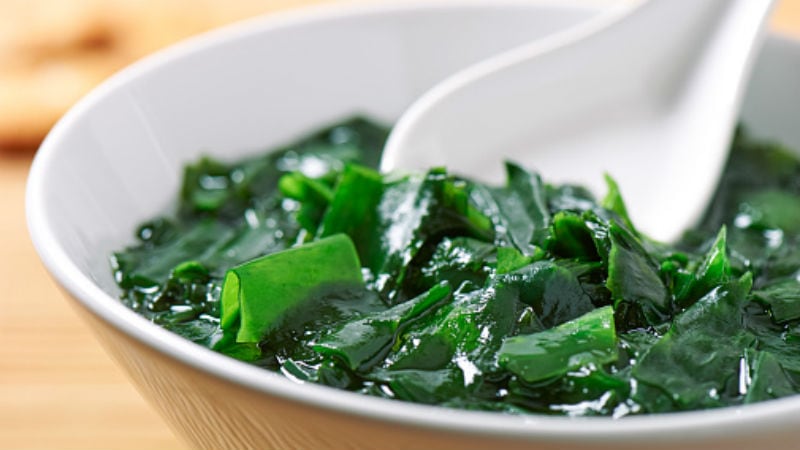According to official documentation released by the South Korean Ministry of Agriculture, Food, and Rural Affairs (MAFRA), the five food sectors highlighted as part of this initiative are: ready-to-eat/convenience foods, environmentally-friendly foods and export-oriented food products, customised and specialty foods, and functional foods.
As a whole, the overall value of these five food sectors has been estimated at some KRW12.4tn (US$10bn) in 2018, and the government plans to raise this to some KRW17tn (US$US$14.5bn) by 2022, then double the 2018 value to hit KRW24.9tn (US$21.3bn) by 2030.
“This measure reflects recent changes in food consumption trends. [The aim is to] discover and nurture promising fields with high potential to develop innovative industrial ecosystems, and to foster the vitality of the entire food industry,” said MAFRA in a formal statement.
“A [strong and] vital food industry will lead the national economy.”
MAFRA Deputy Minister Jaewook Lee added that: “The food industry is likely to grow and create jobs. The effects of this policy are [spread throughout the industries concerning] agriculture, fishery and small-and-medium enterprises.”
“As [the effects of this] spread throughout the industry, not only the food industry but also the economy as a whole, I expect it will have a positive effect.”
Specific plans for regular foods
For ready-to-eat/convenience foods, MAFRA aims to focus on improving the overall system, including taxes and standards, to push forward the growth of the sector.
“The domestic convenience food market is affected by the increase in single-person households and dual-income households - The average annual growth rate is over 11.8%,” said the agency.
“Together with private-led growth partners, we will establish the basics of a system to support the creation of an industrial ecosystem for companies to develop together, including new labelling standards, technology [and] reviewing tax support.
“[There will also be efforts] supporting R&D for premium product development, for example snack foods that are part of this ‘next-generation’ convenience foods market.”
For the second sector of export-oriented foods, MAFRA plans to capitalise on the current global popularity of the Korean entertainment industry, dubbed the Hallyu or Korean Wave.
“The plan is to expand exports linked to the Korean Wave, especially by pursuing promotions using local media based on the Korean Wave and the Korean Wave Cultural Festival (K-Con),” said MAFRA.
“We want to support market development of new areas towards both the south and north [beyond our current major markets] of Japan, China and the United States. There is a lot of growth potential to expand entry into new markets, such as Russia, Mongolia and more.
“[A major one here] is Indonesia, the largest halal market, and we also aim to promote halal certification in the country to further expand here.
In this attempt to diversify Korea’s export markets, MAFRA also aims to ‘actively pursue’ local companies’ export difficulties including reviewing non-tariff barriers via inter-country consultations and looking at managing cold chain and logistics centres based on local distribution environments.
The government will also be placing special focus on environmental-friendly foods as a result of increased public awareness, by focusing on areas such as eco-friendly packaging development and organic foods.
The customised and specialty foods sector will cover four different types of foods: Alternative foods, medifoods, elderly-friendly foods and pet foods.
Plant-based products will fall under the purview of alternative foods. MAFRA announced that a specialist consultative body will be formed by 2022 to cover this area, and that extensive R&D would developed to look into alternative proteins, but no specific mention has been made of whether items like insect protein and cell-based meats fall into this category as of yet.
Medifoods, or foods for special medical purposes, were separated into a special category under. The ministry added that extra support will be provided to promote these as well as the development of reformulated products and ingredients.
Not much information was released on elderly-friendly foods, but MAFRA revealed that this would be governed by the country’s ‘Age-friendly Industry Promotion Act’ and that it would be referring to Japan’s public meal system to see if the local public sector could provide elderly-friendly foods for seniors.
Heavy regulatory changes for functional foods
MAFRA added that in order to improve the functional foods market and support its potential for export, ‘aggressive industrial policy’ was necessary.
“Functional labelling [is very important] – ordinary foods may also display a functionality if it is scientifically proven to be functional, [but we will also] improve the relevant regulations for the use of ingredients manufacturing dietary supplements,” said the ministry.
“Other areas of support include a database of functional raw materials and ingredients, product development support, and improving the support system for products from NPD up to commercialisation.”





